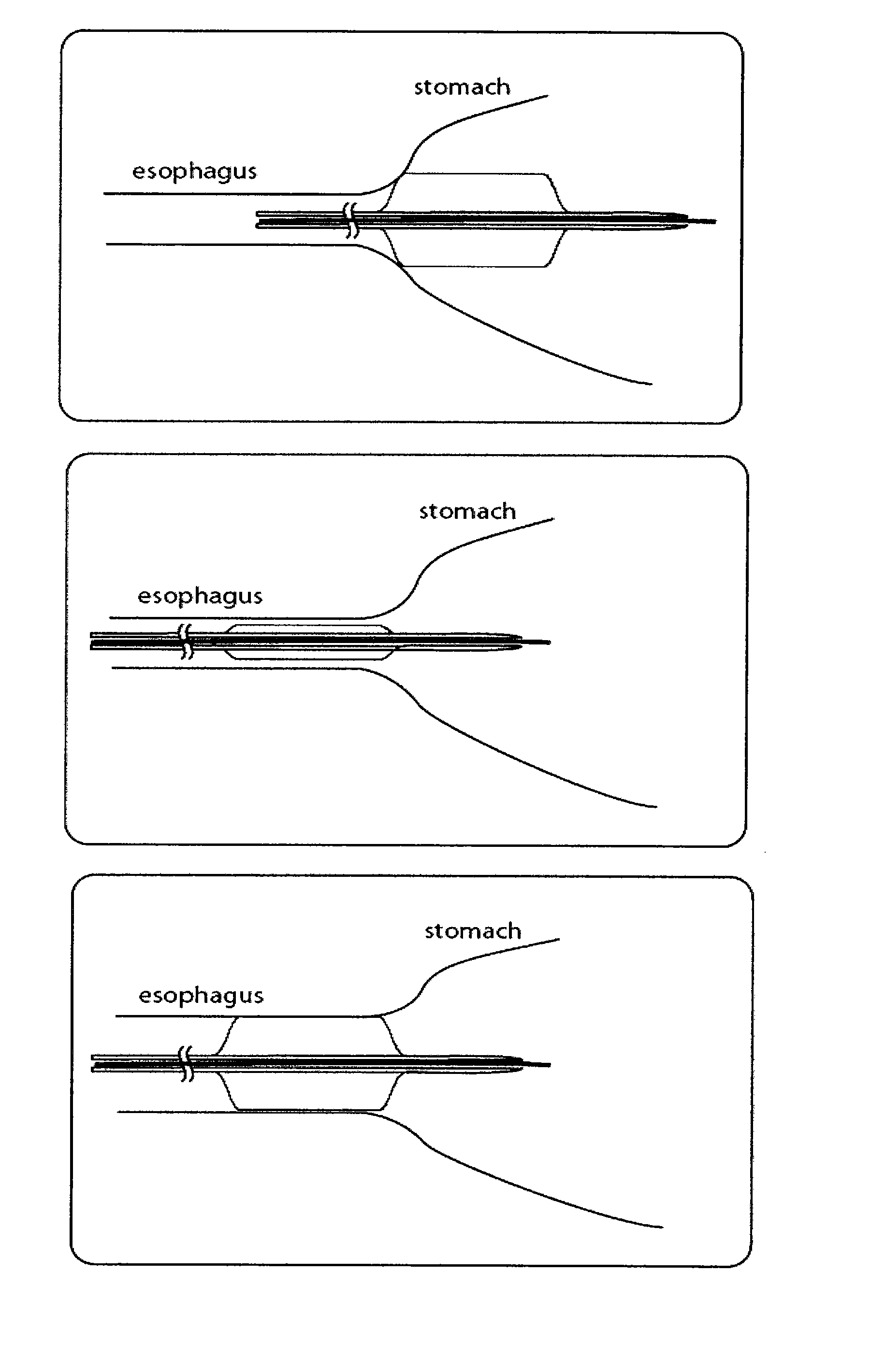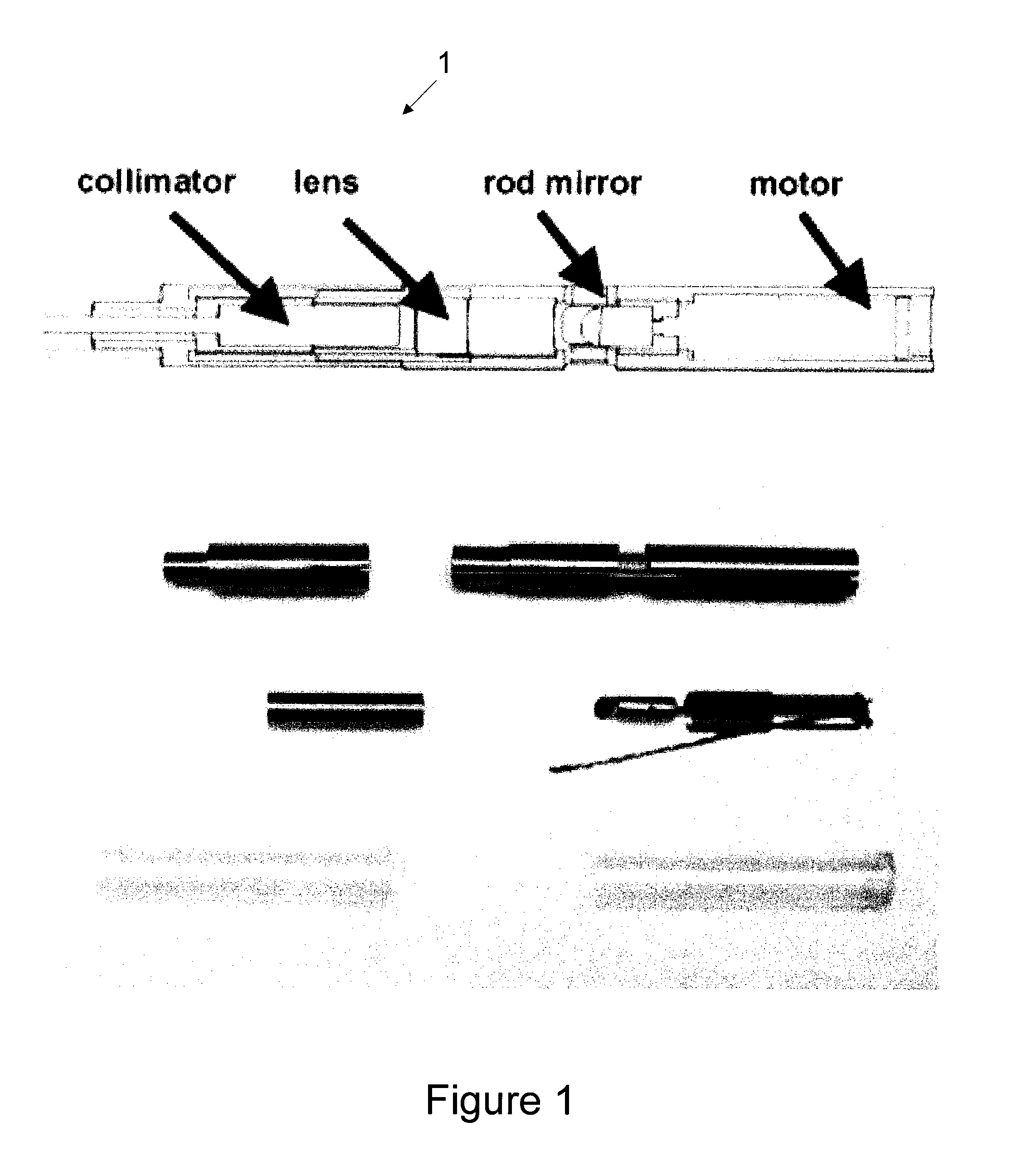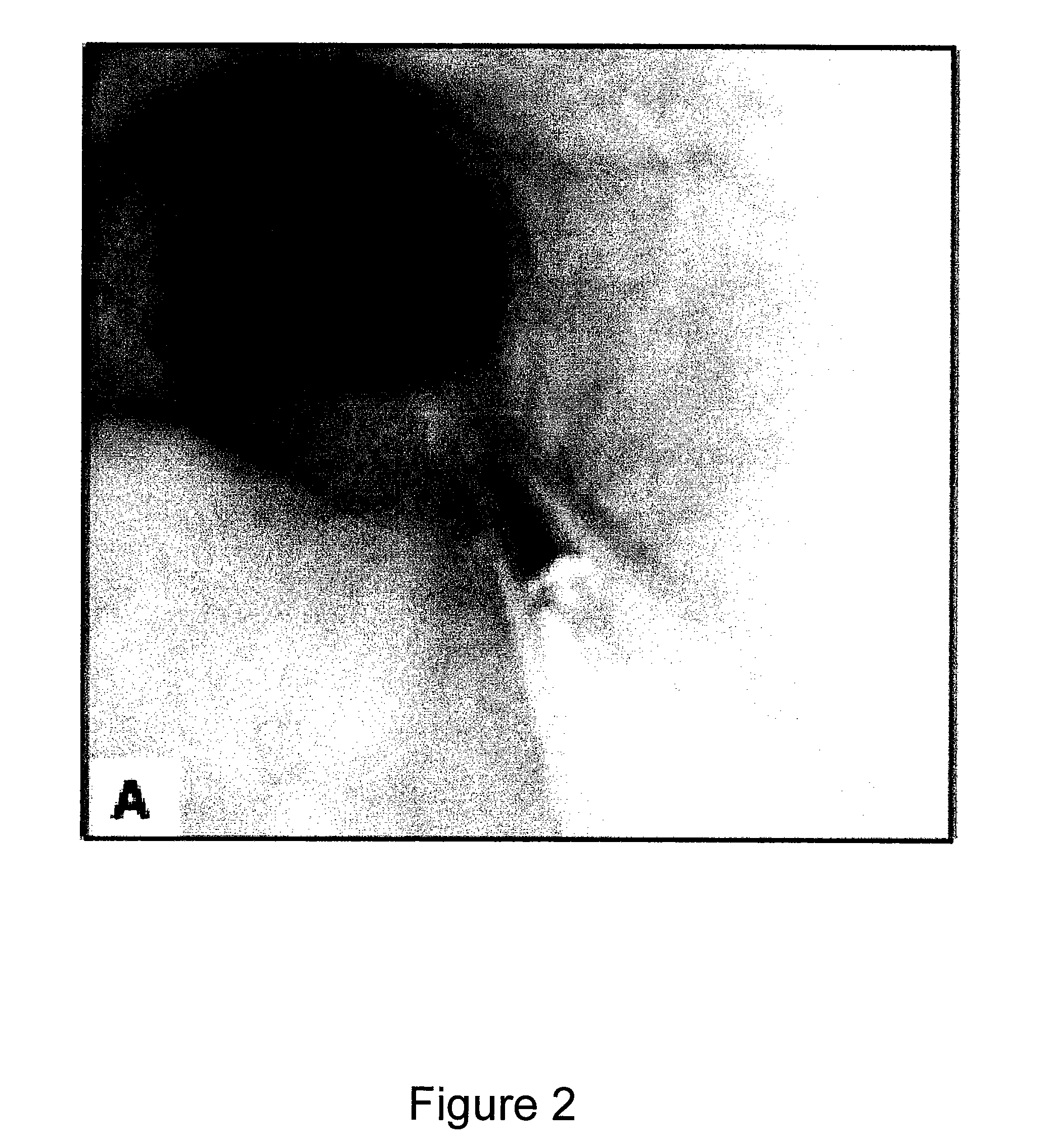Methods and systems for optical imaging or epithelial luminal organs by beam scanning thereof
- Summary
- Abstract
- Description
- Claims
- Application Information
AI Technical Summary
Benefits of technology
Problems solved by technology
Method used
Image
Examples
Embodiment Construction
[0059] An exemplary embodiment of a prototype esophageal probe 1 in accordance with the present invention was constructed to investigate the feasibility of obtaining images of the entire distal esophagus, the schematic diagram of this exemplary probe is illustrated in FIG. 1. Such exemplary prototype esophageal screening probe 1 was designed to enable acquisition of images of the entire distal esophagus while operating independently of endoscopy, in standalone mode. Imaging of the entire distal esophagus, however, can be a challenging task as the distance between the catheter and the esophageal wall may vary significantly, even under optimal conditions. Since the Rayleigh range over which the images remain in focus is approximately 1 mm (˜35 μm spot diameter), the esophageal lumen should be made as circular as possible, and the probe should generally be centered within the esophageal lumen.
[0060] In such exemplary prototype screening probe 1, an esophageal balloon centering cathete...
PUM
 Login to View More
Login to View More Abstract
Description
Claims
Application Information
 Login to View More
Login to View More - R&D
- Intellectual Property
- Life Sciences
- Materials
- Tech Scout
- Unparalleled Data Quality
- Higher Quality Content
- 60% Fewer Hallucinations
Browse by: Latest US Patents, China's latest patents, Technical Efficacy Thesaurus, Application Domain, Technology Topic, Popular Technical Reports.
© 2025 PatSnap. All rights reserved.Legal|Privacy policy|Modern Slavery Act Transparency Statement|Sitemap|About US| Contact US: help@patsnap.com



